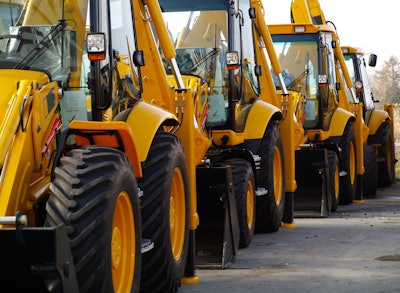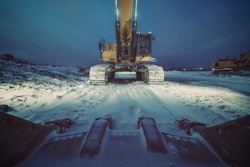
A tire is a pressure vessel and the jewels of any fleet.
Under ideal conditions, tires provide traction, vehicle control and an optimal level of road hazard absorption to ensure the best productivity out of a machine or vehicle.
“If the tires aren't functioning properly the machine's not going to move,” said Craig Tinklenberg, sales and safety trainer for Fuller Bros. Inc. He was featured as a tire expert on a recent Association of Equipment Management Professionals (AEMP) Triangle Talks webinar.
“Protecting those tires is critically important for the performance of your fleet but also for your budget,” he said.
As with many materials and other supplies, tire prices have been increasing rapidly. Most major manufacturers have had multiple double-digit increases.
“If you are in the business of buying tires, you know that we're in a crisis,” Tinklenberg said.
“With tires being in the top three of any fleets' expenditures year over year, it's very important to protect them.”
When it comes to maintenance, Tinklenberg said the single most important factor to consider with tire performance is controlling the heat. Maintaining proper air pressure is critical in controlling that. Both over- and under-inflation can shorten a tire’s useful life due to wear or even tire failure.
Tinklenberg said proper air pressure maintains the design shape of the tire and reduces the amount of deflection or how much the tire flexes.
“It's the flexing and the deflection that generate a lot of that heat,” he said. “When deflection occurs in the appropriate areas, tires are engineered to flex in a certain place on the tire and if it's too much or too little, it's going to affect the bead area or the belt edges and that kind of thing.”
However, when filling a tire, Tinklenberg said it is important to take into consideration, Boyle’s law. Simply put, the physics principle states that for every 10 degrees Fahrenheit change in temperature, the inflation pressure will change by 2 PSI.
“In order to set the pull inflation pressures correctly, one must take into consideration this law of physics to be the most accurate for maximum tire performance,” Tinklenberg said. “When the tire manufacturers design and engineer tire performance characteristics they're using 65 degrees Fahrenheit and see level as their base.”
With varied temperatures across the country, any fleet manager needs to always take that into consideration as equipment is leaving the shop. If it’s reaches 109-degrees outside, the 44-degree difference from the baseline PSI reading needs to be considered. Fortunately, there are charts available to help tire installers dial in the proper pressure based on ambient temperatures.
“You need to increase the pressure by 10% when you when you set the tire pressures when you're installing the tires,” Tinklenberg said. If heat is an anticipated issue right from the start, and you expect the tires to last a certain about of hours or miles and the pressure is not set correctly at the start, that shortens the lifespan of the tire and potentially creates other problems.
Tinklenberg said the reverse happens if its low. If your mounting tires inside of a warm shop, 65 or 70 degrees, and now the vehicle is going to go outside that air pressure is going to be affected.
“You have to increase the pressure a certain percentage to accommodate that fluctuation in temperature, it's very important,” he said.
Under pressure
Per OSHA standards, any employee doing tire service work must have documented training. Without documentation of their training and something happens, there can be big problems.
“These are important items as a fleet manager for you to understand to embrace and to go forward with,” Tinklenberg said.
For example, while it may sound simple enough, it is important to understand the idea of what designates a “flat tire.” Tinklenberg said a tire that is more than 20% below its cold inflation pressure is considered a flat tire. In those conditions, he said it must be dismounted and inspected. However, often, he has seen on social media groups images or videos of shops plugging tires and other crazy things.
“You can't do that you because don't know what's going on inside that tire,” Tinklenberg said. “You stick a plug in there and you could have a catastrophic failure.”
To do things correctly, he suggested that shops have the right equipment such as a calibrated air gauge and a stand-off inflation device to keep workers out of the trajectory zone.
Also, to further keep things under control, Tinklenberg encourages fleet managers to establish a fleet standard for air pressure and ensure any of the tire service personnel are following the Tire Industry Association’s RIST procedure, which stands for remove debris, inspect the lugs and mating surfaces, snug the lug nuts and torque to spec.
“Establish what you want on what axle whether it's a loader, a haul truck, a skid steer, over-the-road truck, whatever and stick with that, always making sure that you're getting the right air pressure right from the jump,” Tinklenberg said. “There's too many guys getting hurt or maimed because they're staying in that trajectory zone when they're doing that inflation. Understand that it's a danger if you're not paying attention and doing the right thing, then all these things are important.”











